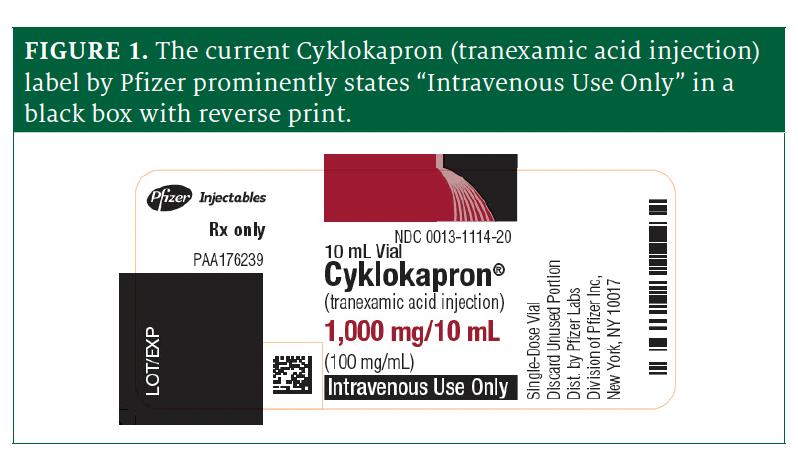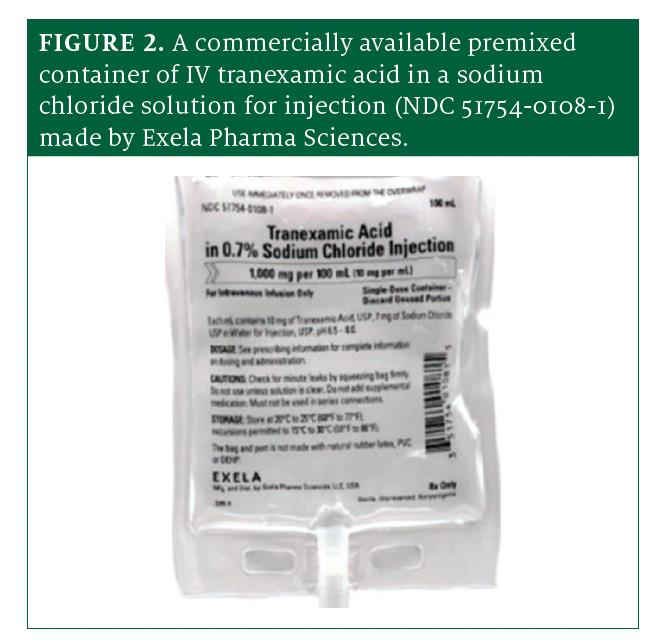📚 Unlock the World of AI and Humanity with These Two Free Books! 🚀
Dive into the thrilling realms of artificial intelligence and humanity with "The ECHO Conundrum" and "Awakening: Machines Dream of Being Human". These thought-provoking novels are FREE this week! Don't miss the chance to explore stories that challenge the boundaries of technology and what it means to be human.
Read More & Download
Tranexamic acid (TXA), a vital medication for controlling bleeding, has unfortunately been involved in serious medication errors, particularly inadvertent spinal injections. One such incident, brought to light by the Institute for Safe Medication Practices (ISMP), involved a physician mistakenly administering TXA instead of bupivacaine for spinal anesthesia. This error, occurring shortly after an FDA warning, highlights the critical need for heightened awareness and preventative measures.
Pharmacovigilance (PV or PhV), also known as drug safety, is the science relating to the detection, assessment, understanding and prevention of adverse effects or any other drug-related problem. Medical safety concept – Image credit: Joel bubble ben | stock.adobe.com
Understanding Tranexamic Acid and its Risks
Tranexamic acid, an antifibrinolytic agent, effectively controls bleeding by preventing the breakdown of fibrin. It’s crucial in various hemorrhagic conditions, including postpartum hemorrhage. However, if mistakenly administered intrathecally (into the spinal canal), TXA acts as a potent neurotoxin. This type of error carries a significant mortality rate (approximately 50%) and often leads to severe neurological consequences for survivors, such as seizures, permanent neurological damage, and paraplegia.
 Tranexamic Acid Injection label clearly stating "Intravenous Use Only"
Tranexamic Acid Injection label clearly stating "Intravenous Use Only"
The ISMP has consistently warned about TXA medication errors. Previous warnings and alerts have emphasized the risks associated with this medication. Additionally, reports have surfaced regarding confusion between TXA and other medications with similar vial appearances, like rocuronium (yellow caps) and succinylcholine chloride (red caps). This visual similarity further increases the risk of errors, especially in settings where barcode scanning isn’t consistently utilized, such as perioperative areas, labor and delivery, and emergency departments. Outside the US, the risk is compounded by the use of ampules with difficult-to-read labels.
📚 Unlock the World of AI and Humanity with These Two Free Books! 🚀
Dive into the thrilling realms of artificial intelligence and humanity with "The ECHO Conundrum" and "Awakening: Machines Dream of Being Human". These thought-provoking novels are FREE this week! Don't miss the chance to explore stories that challenge the boundaries of technology and what it means to be human.
Read More & Download
Risk-Reduction Strategies from Doctors and Pharmacists
To minimize the risk of TXA-related errors, doctors and pharmacists recommend implementing the following strategies:
Workflow and Storage Recommendations
- Review Workflow: Engage with all stakeholders involved in TXA ordering and administration (anesthesiologists, nurse anesthetists, surgeons, surgical staff) to thoroughly review and refine the medication workflow.
- Dedicated Storage: Remove TXA from anesthesia trays. Designate a separate and secure storage location for TXA, preferably within the pharmacy or a designated clinical area. Implement clear signage, shelf talkers, or auxiliary labels to highlight TXA and distinguish it from other medications. Avoid storing TXA near local anesthetics.
- Ordering Procedures: Explore the possibility of incorporating TXA into standardized order sets dispatched directly from the pharmacy.
 Example of medication storage with clear labels and separation
Example of medication storage with clear labels and separation
Vial Handling and Identification
- Visible Labels: Store vials in a manner that ensures labels are always visible. Avoid storing vials upright in bins or drawers, especially below eye level, where only the cap is visible.
- Differentiating Packaging: Evaluate the packaging of look-alike ampules and vials, including cap colors. Consider purchasing from different manufacturers to reduce the risk of confusion.
- Barcode Scanning: Implement and enforce barcode scanning in all surgical and obstetrical areas to verify medication selection before dispensing and administering.
 Example of a premixed intravenous tranexamic acid bag
Example of a premixed intravenous tranexamic acid bag
Utilizing Premixed Solutions and Pharmacy Preparation
- Premixed TXA: Whenever possible, utilize commercially available premixed intravenous TXA solutions (e.g., 1 g/100 mL). These premixed bags are less likely to be confused with local anesthetics in vials. While primarily indicated for hemophilia patients undergoing tooth extractions, these solutions can be considered for off-label use in other bleeding scenarios.
- Pharmacy-Prepared Infusions: If premixed solutions are unavailable (e.g., during drug shortages), consider having the pharmacy prepare intravenous infusions specifically for surgical areas. This reduces the risk of confusion with other medications. Note that vials may still be necessary for loading doses or topical/local applications.
Conclusion: Prioritizing Patient Safety with Tranexamic Acid
Tranexamic acid remains a critical medication for managing hemorrhage; however, its potential for serious errors necessitates vigilant adherence to safety protocols. By implementing the recommendations outlined above, healthcare professionals can significantly reduce the risk of TXA medication errors and ensure patient safety. For personalized treatment plans and further information, consult with a healthcare professional.
📚 Unlock the World of AI and Humanity with These Two Free Books! 🚀
Dive into the thrilling realms of artificial intelligence and humanity with "The ECHO Conundrum" and "Awakening: Machines Dream of Being Human". These thought-provoking novels are FREE this week! Don't miss the chance to explore stories that challenge the boundaries of technology and what it means to be human.
Read More & Download

